The architects provided an explanation in text. This well-built residence on Long Island’s East End is a tranquil haven all year round. It is situated on a bluff with a view of the ocean. Large doors in the living quarters open to the outside, letting in summer breezes and lapping waves, but in the winter, they face a cozy two-sided fireplace and toasty wood paneling.
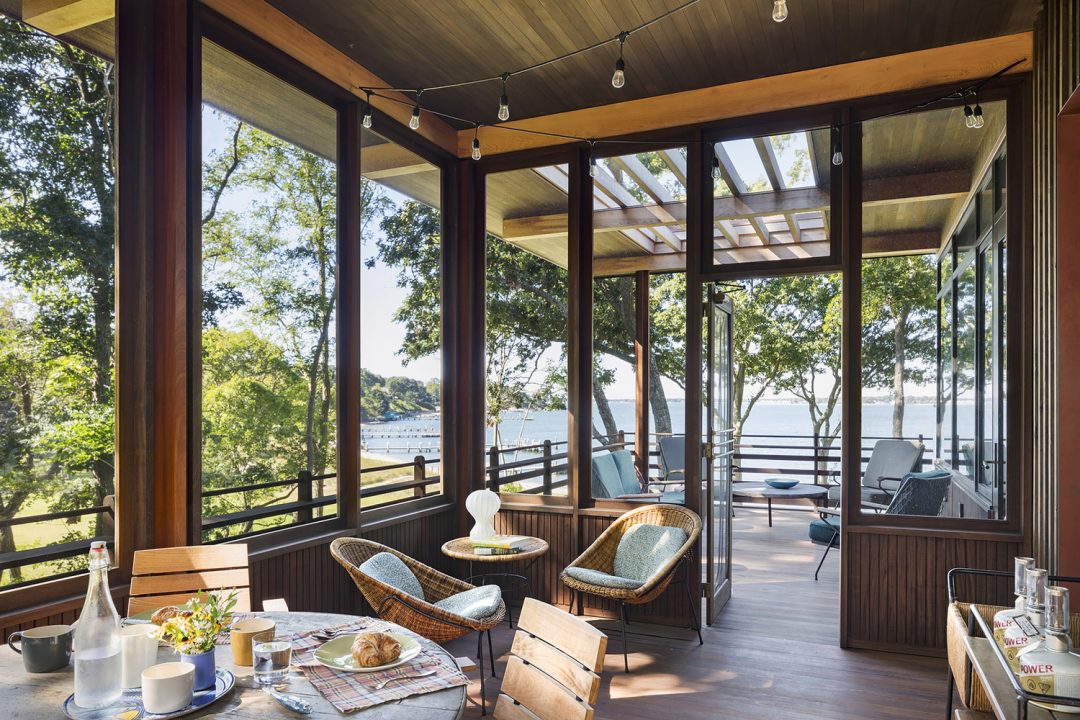
Broad cantilevered overhangs create beautiful outdoor rooms and provide summertime shade. Despite being modern, the house makes a clear reference to the early modern homes that the client was inspired by.
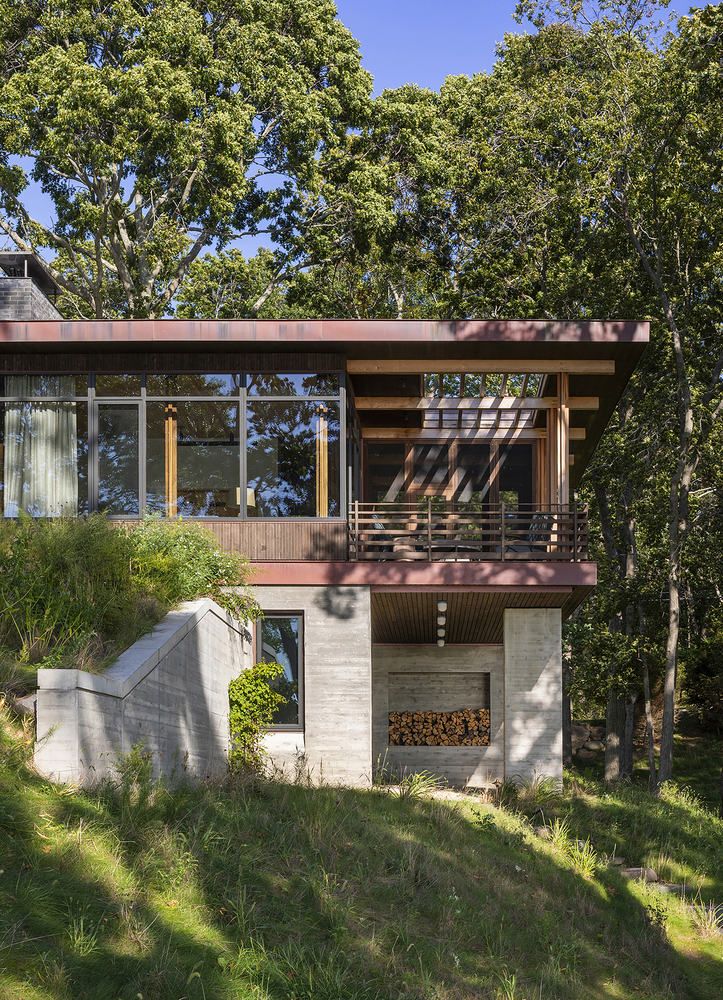
A forest on one side and a bluff with views of a sandy beach and the sea on the other provide for a unique setting for the house. Views and links to the natural environment are given priority, and each space is positioned to maximize the enjoyment of the local nature, sunlight, and water views. The home is maintained low and steps down with the topography rather than cutting through the forest line to lessen its impact on the site.
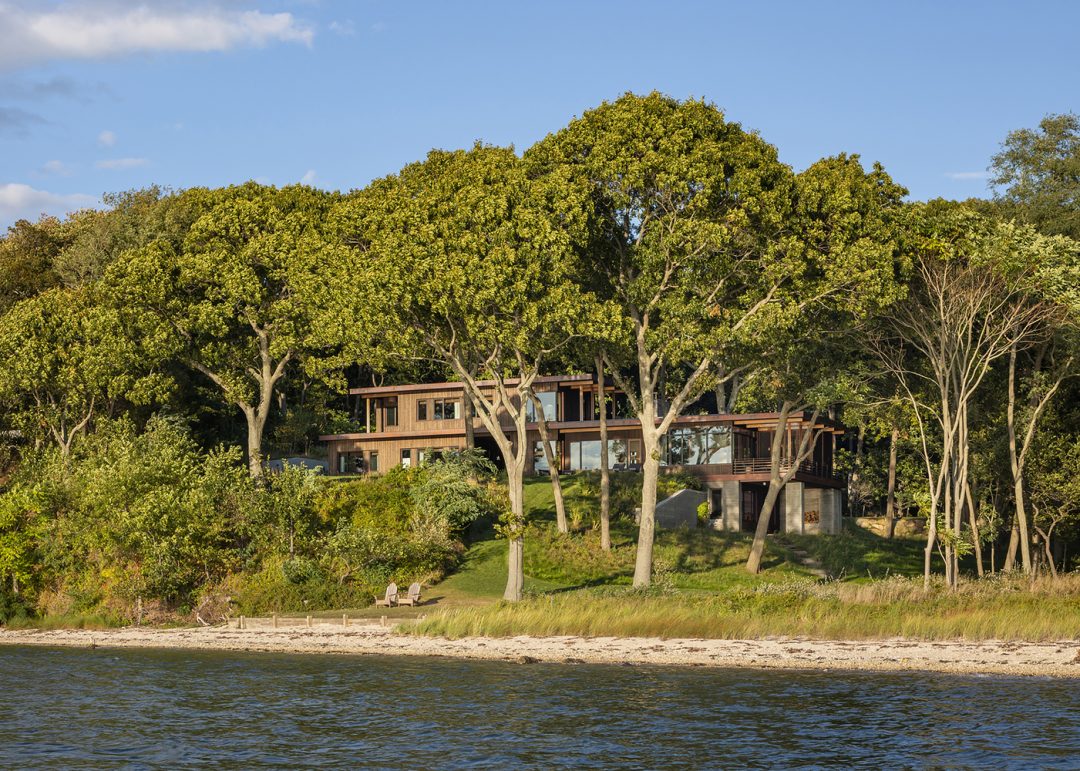
Due to the wide eaves on the flat roofs, which help it blend in more gradually with the surroundings, the two-story house appears smaller than it actually is. From the beach, the house appears to almost vanish.

The cantilevered porch, which is supported by a sizable wooden structure made of board-formed planks and a board-formed retaining wall, is the home’s striking architectural feature.
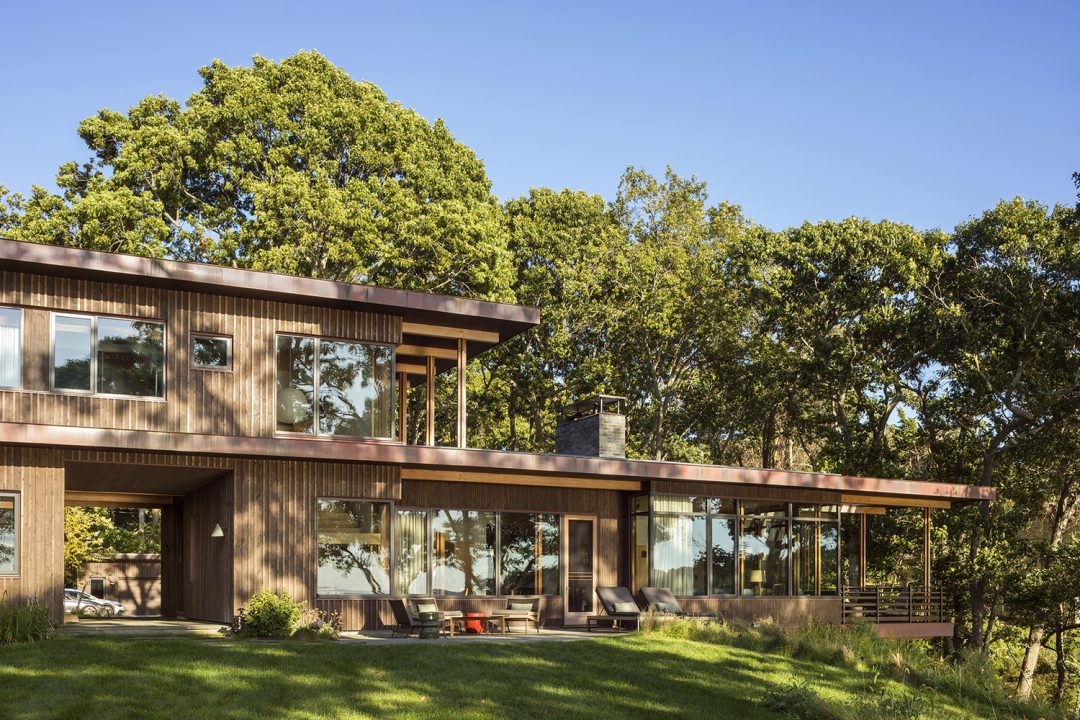
The cantilevered porch, which is supported by a sizable wooden structure made of board-formed planks and a board-formed retaining wall, is the home’s striking architectural feature.
Careful construction employing a limited element palette supports the idea of a great home that endures for generations.
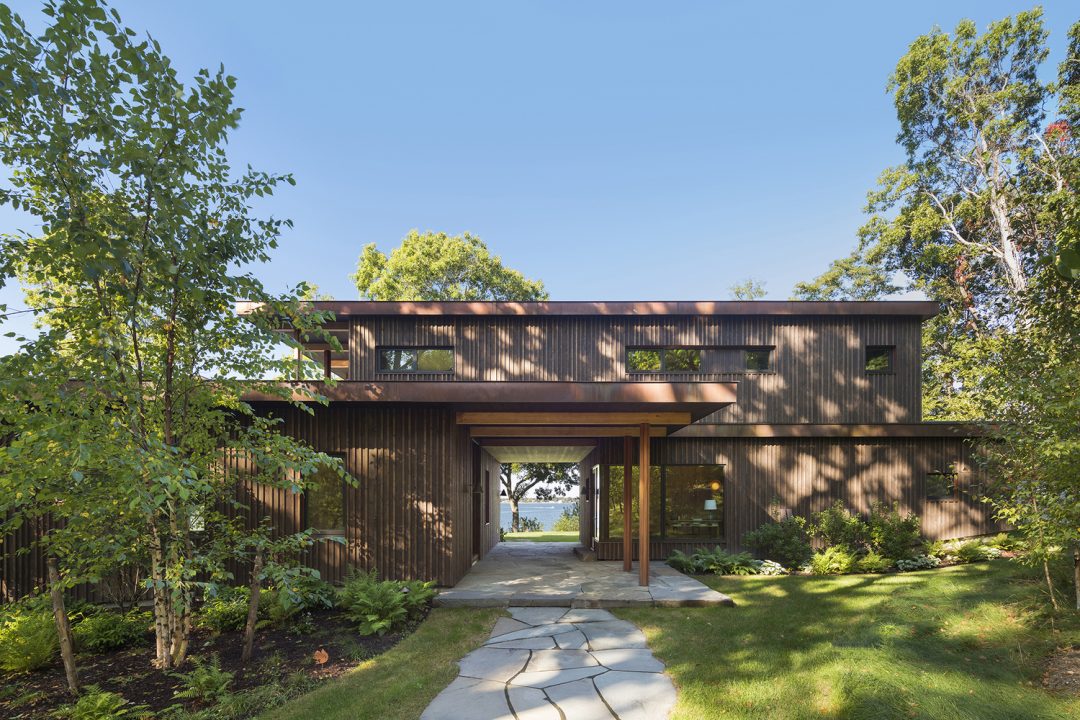
The architects provided an explanation in text. This well-built residence on Long Island’s East End is a tranquil haven all year round. It is situated on a bluff with a view of the ocean. Large doors in the living quarters open to the outside, letting in summer breezes and lapping waves, but in the winter, they face a cozy two-sided fireplace and toasty wood paneling.
Broad cantilevered overhangs create beautiful outdoor rooms and provide summertime shade. Despite being modern, the house makes a clear reference to the early modern homes that the client was inspired by.

A forest on one side and a bluff with views of a sandy beach and the sea on the other provide for a unique setting for the house. Views and links to the natural environment are given priority, and each space is positioned to maximize the enjoyment of the local nature, sunlight, and water views. The home is maintained low and steps down with the topography rather than cutting through the forest line to lessen its impact on the site.
Due to the wide eaves on the flat roofs, which help it blend in more gradually with the surroundings, the two-story house appears smaller than it actually is. From the beach, the house appears to almost vanish.

The cantilevered porch, which is supported by a sizable wooden structure made of board-formed planks and a board-formed retaining wall, is the home’s striking architectural feature.
A recognizable regional color scheme of red cedar, copper, and bluestone conceals the sophisticated passive house strategies and building techniques used, which include a heavily insulated building, a continuously insulated envelope, energy-recovery ventilation, and a green roof that provides both visual and environmental benefits.
Careful construction employing a limited element palette supports the idea of a great home that endures for generations.

As the sun dipped below the horizon, casting a warm golden glow over the ocean, the beach house by architect Andrew Franz stood as a testament to timeless design and coastal elegance. Its sleek lines and expansive windows captured the essence of the surrounding natural beauty. Nestled in harmony with its environment, it whispered stories of unforgettable moments and became a cherished retreat for generations to come.